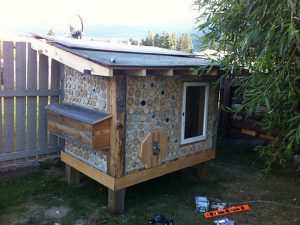Last Updated on November 3, 2025 by teamobn
The oceans and all that they entail have captured the attention of humanity for millenia. We can see this fascination play out in many different ways, from the creation of mermaid myths to the exploration of the deep sea. But perhaps one of the most interesting ways that this fascination manifests is in the building of ship models.
What began as a practical tool for shipwrights has blossomed into a beloved hobby that brings joy to people of all ages and backgrounds. This pastime offers something truly special – a chance to connect with maritime history while creating beautiful pieces with your own hands. Let’s explore it in more depth.
Contents
From ancient practice to modern hobby
You might be surprised to learn that model shipbuilding has been around since the time of the ancient Egyptians! That’s right – they created miniature vessels to accompany their loved ones into the afterlife, and these fascinating models have given us incredible insights into their maritime culture.
But as time moved forward, the craft evolved into something quite practical – shipwrights would craft detailed scale models to show their designs to merchants and naval officials.
But, how can you get started?
Of course, today’s craft is very different from what the ancient Egyptians used to practice. Let’s talk about getting you started on your model shipbuilding journey; and trust us when we tell you that choosing the right first project can make all the difference in your experience.
Many of our experienced friends in the hobby recommend beginning with a quality kit rather than diving straight into scratch building – it’s a great way to learn the ropes while having the safety net of pre-cut parts and clear instructions.

For beginners, we usually suggest starting with something like a charming fishing boat or coastal trader before taking on more challenging vessels like the magnificent USS Constitution.
Also, keep in mind that larger scales are typically more forgiving for beginners – you’ll find it easier to handle the pieces and add those beautiful details. Just remember to consider your available display space and budget, as larger models do need more room and materials.
Making your model ships part of your home
Here’s something we’re particularly excited to share with you – how to turn your ship models into stunning focal points in your home décor. These miniature masterpieces deserve to be showcased, and we’ve seen some absolutely beautiful ways to display them. For example, you could incorporate your models into a maritime-themed study or creating a striking focal point in your living room.
Lighting plays a crucial role in displaying your work, and we encourage you to experiment with different options:
- Small LED spotlights.
- Vibrant colored lights.
- Backlighting.
Another great way to incorporate your model ships into your home décor is by placing them in a display case. Many of our fellow builders have found that glass display cases not only protect their precious creations from dust but also add an elegant museum-like quality to their home.
Essential tools and materials
Let’s talk about setting up your workshop! While you might feel tempted to buy everything at once, we’ll help you focus on the essentials that will make your building experience truly enjoyable. You’ll definitely want to invest in a good magnifying lamp – your eyes will thank you later! Add some precise cutting tools and a variety of clamps, and you’ll have the backbone of a solid model builder’s toolkit.

We’re particularly excited about all the amazing materials available to today’s model builders. While traditional woods still hold a special place in our hearts, you’ll find that modern plastics, resins, and metal parts open up incredible possibilities for detail and durability.
And here’s a game-changer we love: laser-cut components have made those complex model ships much more approachable, though we know many builders who still prefer the deep satisfaction of crafting each piece by hand.
Mastering basic techniques
Let’s focus on getting you started with the fundamental skills that will set you up for success. We’ve found that careful planning, precise measuring, and clean cutting form the bedrock of great model shipbuilding.
And one thing we can’t emphasize enough is the importance of patience. Take your time getting to know different materials and techniques. We always encourage new builders to keep some practice pieces handy – it’s much better to test out new techniques on these than on your main project! You’ll be amazed at how quickly you progress as you learn to work with wood grain, master various adhesives, and develop your eye for detail.
Advanced skills and specialization
As you grow more confident in your model ships building abilities, you might find yourself drawn to particular aspects of model shipbuilding. We’ve seen many builders develop fascinating specialties – some fall in love with specific historical periods, while others discover a passion for scratch building or creating detailed dioramas.
Finally, let’s talk about one of the most challenging and rewarding aspects of advanced building: weathering and finishing. Creating realistic effects that suggest age, wear, and exposure to the elements is truly an art form. In fact, many of us spend years perfecting our finishing techniques, and we still find new ways to improve with each project.
Here’s something we’ve learned to appreciate: documentation is your friend! Keeping detailed build logs, taking plenty of photographs, and maintaining good notes might seem like extra work now, but trust us – you’ll be grateful for these records later. Not only do they help track your progress, but they often become valuable resources for other builders taking on similar projects.
The future of the hobby
You’re joining the hobby at such an exciting time! We’re seeing amazing developments in technology that are transforming what’s possible in model shipbuilding. 3D printing, for instance, has opened up incredible opportunities for creating custom parts and accessories. Digital design tools are making it easier than ever to plan and scale projects with precision. While these innovations make some aspects of building more accessible, they also create exciting new challenges and opportunities for creativity.
We’re particularly thrilled to see growing interest from younger generations who are bringing fresh perspectives to our beloved hobby. They’re finding brilliant ways to blend traditional methods with modern technology, and it’s fascinating to watch. This mix of old and new approaches ensures that model shipbuilding will continue to evolve and thrive.
So, all in all, shipbuilding can be a hobby that is both challenging and rewarding. It requires patience, attention to detail, and a passion for history and craftsmanship. But the end result is always worth it – a beautiful and unique model ship that you can proudly display in your home or office.






